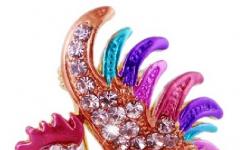The cortex works in conjunction with other structures. This part of the organ has certain features related to its specific activities. The main basic function of the cortex is to analyze information received from the organs and store the received data, as well as their transmission to other parts of the body. The cerebral cortex communicates with information receptors, which act as receivers of signals entering the brain.
Among the receptors there are sensory organs, as well as organs and tissues that carry out commands, which, in turn, are transmitted from the cortex.
For example, visual information coming from is sent along nerves through the cortex to the occipital zone, which is responsible for vision. If the image is not static, it is analyzed in the parietal zone, in which the direction of movement of the observed objects is determined. The parietal lobes are also involved in the formation of articulate speech and a person’s perception of his location in space. The frontal lobes of the cerebral cortex for higher mental functions involved in the formation of personality, character, abilities, behavioral skills, creative inclinations, etc.
Lesions of the cerebral cortex
When one or another part of the cerebral cortex is damaged, disturbances occur in the perception and functioning of certain human sensory organs.
With lesions of the frontal lobe of the brain, mental disorders occur, which most often manifest themselves in serious impairment of attention, apathy, weakening of memory, sloppiness and a feeling of constant euphoria. Man loses some personal qualities and he notices serious behavioral deviations. Frontal ataxia often occurs and manifests as difficulty standing or walking, difficulty moving, problems with accuracy, and the occurrence of hit-and-miss phenomena. The phenomenon of grasping may also occur, which consists of obsessively grasping objects surrounding a person. Some scientists associate the appearance of epileptic seizures precisely after injury to the frontal lobe.
When the frontal lobe is damaged, a person’s mental abilities are significantly impaired.
With lesions of the parietal lobe, memory disorders are observed. For example, astereognosis may occur, which manifests itself in the inability to recognize an object by touch when closing the eyes. Apraxia often appears, manifested in a violation of the formation of a sequence of events and the building of a logical chain for performing a motor task. Alexia is characterized by the inability to read. Acalculia is a violation of the ability to carry out operations with numbers. There may also be impaired perception of one's own body in space and an inability to understand logical structures.
The affected temporal lobes are responsible for hearing and perception disorders. With lesions of the temporal lobe, perception is impaired oral speech, attacks of dizziness, hallucinations and seizures, mental disorders and excessive irritation begin. Injuries to the occipital lobe cause visual hallucinations and disturbances, the inability to recognize objects when looking at them, and distorted perception of the shape of an object. Sometimes photoms appear - flashes of light that occur when the inner part of the occipital lobe is irritated.
In the parietal lobe, parallel to the central sulcus, there is a postcentral sulcus, merging with the intraparietal sulcus. On the superolateral surface of the parietal lobe there are three gyri: one vertical (postcentral gyrus) and two horizontal (superior and inferior parietal lobules). The lower parts of the inferior parietal lobule are the supramarginal gyrus, which encircles the lateral sulcus, and the angular gyrus, which closes the superior temporal sulcus. On medial surface The parietal lobe is located in the precuneus.
Centers of the parietal lobe of the brain and their damage:
1. Center common types sensitivity– in the postcentral gyrus; bilateral, partially covers the superior parietal lobule. The upper part of the postcentral gyrus contains receptors for the skin of the leg, the middle part for the arms, and the lower part for the head.
Irritation of this gyrus is accompanied by the appearance of paresthesia (unpleasant sensations in the form of numbness, tingling, crawling sensations) in the opposite half of the body, which can spread and turn into a general convulsive seizure (a sensitive version of Jacksonian epilepsy). When areas of the postcentral gyrus are compressed or destroyed, a decrease or loss of sensitivity (temperature, pain, tactile, joint-muscular sense) is observed according to the type of monohypoesthesia or monoanesthesia on the opposite half of the body, most pronounced in the distal limbs.
2. Centers for the perception of complex types of sensitivity(localization, weight determination, discrimination, two-dimensional sense) - in the superior parietal lobule.
3. Body schema center – In the region of the intraparietal sulcus.
Damage to this area leads to a disorder in the correct understanding of the spatial relationships and sizes of parts of one’s body in the form of a distorted idea of the shape and size, for example, of an arm or leg (autotopagnosia), the appearance of a feeling of having an extra limb (pseudomelia), lack of awareness of a defect, for example, paralysis of the limbs ( anosognosia). Finger agnosia, which is characterized by failure to recognize the fingers of one’s own limbs, may occur.
4. Praxia centers– in the supramarginal gyri; ensure the execution of complex purposeful movements in a certain sequence, learned in the process of life.
When they are damaged, it occurs Apraxia(violation of purposeful actions):
a) ideation apraxia (apraxia of intention) – a disorder in the sequence of movements when performing a task; the patient performs actions that are not necessary to achieve the goal
B) motor apraxia (apraxia of execution) - a disorder of acting on orders or imitation.
C) constructive apraxia - the inability to construct a whole from a part - figures from matches, cubes
5. Stereognosia Center- in the inferior parietal lobule.
Its defeat causes astereognosia (tactile agnosia), when the patient cannot recognize objects by touch.
6. Lexicon Center- in the angular gyrus, in a right-handed person on the left - the ability to recognize printed signs and the ability to read.
When it is damaged, alexia develops (a disorder in understanding written and printed characters).
7. CenterAccounts (calculi)- above the angular gyrus.
When it is affected, acalculia develops (impaired counting).
Semantic aphasia(impaired ability to understand complex logical-grammatical structures) occurs when the area where the inferior parietal lobe transitions to the temporal and occipital lobes is affected. The patient cannot catch semantic difference between expressions like “father’s brother” and “brother’s father.”
Parietal lobe syndrome: postcentral gyrus lesion syndrome:
1. Hemianesthesia of the opposite limbs and face, possibly monoanesthesia
2. Primary astereognosia (loss of the ability to recognize objects by touch)
3. Autotopagnosia (disorder of the correct idea of one’s own body), anosognosia (lack of awareness of one’s defect)
4. Acalculia (disorder of counting and performing arithmetic operations)
6. Motor, ideational and constructive apraxia
7. Violation of right-left orientation
9. Central urinary incontinence
10. Hemianopsia (optic radiance damage)
Parietal lobe irritation syndrome:
1. Sensitive Jacksonian epilepsy
2. Posterior adversive attacks
3. Opercular seizures
One important area is the parietal lobe.
Its main function is to analyze information about space.
Damage to this structural formation entails negative consequences for spatial perception, wording of speech, etc.
General information about the parietal lobe
The parietal lobe is a part of the cerebral hemisphere that is located behind the central sulcus. The posterior border runs along the parieto-occipital sulcus and borders the occipital lobe. On the sides, the parietal lobe is limited by the Sylvian fissure.
This structure of the cerebral hemisphere has the following main grooves:
- postcentral, which in turn is divided into upper and lower;
- interparietal.
The intersection of these grooves is called the helix, or star.
In the anterior part is the postcentral gyrus. The other two gyri are the superior parietal and inferior parietal, which are located horizontally.
What fields are included?
In total, the parietal lobe of the brain has nine fields. The first three fields, which are 1, 2 and 3, are primary sensorimotor fields. They are located in the vertical gyrus of the parietal lobe (postcentral). The fourth field is the primary motor cortex. Areas 5 and 6 are secondary somatosensory and motor areas, respectively. The seventh field, which is located in the upper part of the parietal lobe, is the tertiary motor cortex. Field 39, in turn, is responsible for analysis writing. The main function of field 40 is reading comprehension, as well as ensuring the reading process.
This part of the brain is characterized by the presence of the following centers:
- the center of the “body diagram” - is responsible for recognizing the position of the body and individual organs in space;
- sensitivity center – analyzes information about any changes in the environment;
- center of praxia – responsible for performing complex actions;
- vocabulary center – helps in recognizing letters and other signs;
- calculus center - responsible for carrying out numerical calculations in the mind.

What is he responsible for?
The main function of this brain structure is to analyze information about space.
It is thanks to the parietal lobe that a person can determine the position of body parts and other objects, sizes, and proportions.
In addition, it is responsible for the analysis of oral and written speech, the perception of texts, verbal memory, as well as gaze control.
There are centers where analyzers are located that are responsible for the sensitivity of the skin, limbs and head. Thanks to this, a person can feel pressure on these organs, any changes in the temperature of the external environment, a feeling of goosebumps.
At the bottom of this brain structure are the praxis centers. Their main role is for a person to perform certain actions that are purposeful. This may include eating, running, dressing, and other activities.
Manifestations of dysfunctions
Since this part of the brain performs a huge number of functions, when this structure is damaged, a number of problems are observed in the perception of information, as well as in the performance of certain actions.
The main dysfunction is apraxia. In this case, the perception of space is disrupted, and some difficulties arise in performing certain actions, in particular purposeful ones.
Semantic aphasia characterized by the appearance of problems with the creation of speech. A person ceases to understand complex structures and speech patterns that are associated with space. To diagnose damage to the parietal lobe, doctors often ask the victim the following questions:
- Book on the table or table on the book?
- Who is older - grandfather's son or grandfather's son?
Acalculia accompanied by difficulties in making numerical calculations in the mind. May also manifest alexia, which is characterized by difficulties in recognizing written speech, and accordingly problems with reading appear. The occurrence of this dysfunction may indicate damage to the posterior part of the parietal lobe.
There may be a loss of sensitivity, which is characterized by difficulty recognizing objects by touch. In addition to this, sensitivity to pain and changes in external temperature decreases. This defect is called astereognosia.
If affected, there may be a problem recognizing the volume and weight of objects. A person loses his two-dimensional spatial sense. In addition, you may feel like you have an extra arm or leg.
In addition to the above dysfunctions, after damage to the parietal lobe, urinary incontinence, as well as Jacksonian epilepsy, can develop.
The peculiarity of this type of epilepsy is that most often during an attack the person is fully conscious, and the convulsions spread throughout the body in a certain order.
The parietal lobe is separated from the frontal central sulcus, from the temporal lobe by the lateral sulcus, and from the occipital lobe by an imaginary line drawn from the upper edge of the parieto-occipital sulcus to the lower edge of the cerebral hemisphere. On the outer surface of the parietal lobe, a vertical postcentral gyrus and two horizontal lobes are distinguished - the superior parietal and inferior parietal, separated by a vertical groove. The part of the inferior parietal lobule located above the posterior part of the lateral sulcus is called the supramarginal gyrus, and the part surrounding the ascending process of the superior temporal sulcus is called the angular gyrus.
The afferent pathways of cutaneous and deep sensitivity end in the parietal lobes and postcentral gyri. Here the analysis and synthesis of perceptions from receptors of surface tissues and organs of movement are carried out. With lesions of these anatomical structures, sensitivity, spatial orientation and regulation of purposeful movements are impaired.
Anesthesia (or hypoesthesia) of pain, thermal, tactile sensitivity, disorders of joint-muscular sensation appear with lesions of the postcentral gyri. Most of the postcentral gyrus is occupied by the projection of the face, head, hand and fingers.
Astereognosis is the failure to recognize objects when palpating them with eyes closed. Patients describe individual properties of objects (for example, rough, with rounded corners, cold, etc.), but cannot synthesize the image of the object. This symptom occurs in lesions in the superior parietal lobule, near the postcentral gyrus. When the latter, especially its middle part, is affected, all types of sensitivity for upper limb, therefore, the patient is deprived of the opportunity not only to recognize an object, but also to describe its various properties (false astereognosis).
Apraxia (a disorder of complex actions while maintaining elementary movements) occurs as a result of damage to the parietal lobe of the dominant hemisphere (in right-handed people - the left) and is detected during the functioning of the limbs (usually the upper). Lesions in the region of the supramarginalis (gyrus supramarginalis) cause apraxia due to the loss of kinesthetic images of actions (kinesthetic or ideational apraxia), and lesions of the angular gyrus (gyrus angularis) are associated with the collapse of the spatial orientation of actions (spatial or constructive apraxia).
A pathognomonic symptom of damage to the parietal lobe is a violation of the body diagram. This is expressed by misrecognition or distorted perception of parts of their body (autotopagnosia): patients confuse the right half of the body with the left, cannot correctly show their fingers when calling them a doctor. Less common is the so-called pseudopolymelia - the feeling of an extra limb or other part of the body. Another type of body diagram disorder is anosognosia - failure to recognize the manifestations of one’s disease (the patient, for example, claims that he moves his paralyzed left upper limb). Note that body diagram disorders are usually observed with lesions of the non-dominant hemisphere (right - in right-handed people).
When the parietal lobe is damaged in the area that borders the occipital and temporal lobes (areas 37 and 39 are phylogenetically young formations), the symptoms of disorders of higher nervous activity are combined. Thus, turning off the posterior part of the left angular gyrus is accompanied by a triad of symptoms: finger agnosia (the patient cannot name the fingers), acalculia (counting disorder) and a violation of right-left orientation (Gerstmann syndrome). These disorders may be accompanied by alexia and symptoms of amnestic aphasia.
Destruction of the deep parts of the parietal lobe leads to inferior quadrant hemianopia.
Symptoms of irritation of the postcentral gyrus and parietal lobe are manifested by paroxysms of paresthesia - various skin sensations in the form of crawling, itching, burning, passing electric current(sensory Jacksonian seizures). These sensations arise spontaneously. With lesions in the postcentral gyrus, paresthesia usually occurs in limited areas of the body (usually on the face, upper limb). Cutaneous paresthesias before epileptic seizures are called somatosensory auras. Irritation of the parietal lobe posterior to the postcentral gyrus causes paresthesia immediately over the entire opposite half of the body.
Syndromes of local damage to the parietal lobes
I. Postcentral gyrus
- Elementary somatosensory disorders
- Contralateral decrease in sensitivity (stereognosis, muscle-joint sense, tactile, pain, temperature, vibration sensitivity)
- Contralateral pain, paresthesia
II. Medial sections (cuneus)
- Transcortical sensory aphasia (dominant hemisphere)
III. Lateral divisions (superior and inferior parietal lobules)
- Dominant hemisphere
- Parietal apraxia
- Finger agnosia
- Acalculia
- Right-left disorientation
- Literal alexia
- Alexia with agraphia
- Conduction aphasia
- Non-dominant hemisphere
- Anosognosia
- Autotopagnosia
- Hemidimensional neglect (neglect)
- Constructive apraxia
- Apraxia of dressing
IV. Epileptic phenomena characteristic of the parietal localization of the epileptic focus.
Lesions of the parietal lobe are accompanied by various types of agnosia, apraxia and spatial disorientation.
In addition to what has been said, many other neurological syndromes associated with the parietal localization of brain damage have been repeatedly described in the literature. A rare syndrome is parietal ataxia. It develops with damage to those parts of the parietal lobe into which proprioceptive, vestibular and visual sensory streams converge, and is manifested by decomposition of movements, hyper- and hypometria, as well as tremor.
Muscle atrophy (especially the arm and shoulder girdle) on the opposite half of the body is also often described, which sometimes precedes paresis in slow-onset pathological processes.
Parietal injuries in the first three years of life are sometimes accompanied by delayed growth of bones and muscles on the opposite half of the body.
Manual and oral apraxia, hypokinesia, echopraxia, paratonia (gegenhalten) have been described.
Variants of thalamic syndrome sometimes develop with parietal damage. With processes in the posterior parts of the parietal lobe, visual disturbances in the form of visual field defects may appear. Unilateral visual neglect (neglect or inattention) can be observed without a visual field defect. Violations of visual perception (metamorphopsia) can occur with both bilateral and unilateral lesions (usually on the right). There are some indications of the possibility of the appearance of disturbances in pursuit eye movements and optokinetic nystagmus, a mild decrease in intelligence, mental blindness, finger agnosia (in the picture of Gerstmann's syndrome), disturbances in spatial orientation (the posterior parts of the parietal lobe play a special role in visuospatial directed attention, the ability to direct visual attention to a particular place in the surrounding space). The phenomenon of “beautiful indifference” in hemispatial neglect syndrome, deterioration in recognition of emotional vocalization, and depression have also been described.
I. Postcentral gyrus.
Lesions in this area are manifested by well-known somatotopically organized contralateral sensitivity disorders (impaired stereognosis and muscle-articular sense; tactile, pain, temperature, vibration hypoesthesia) as well as contralateral paresthesia and pain.
II. Medial parts of the parietal lobe (precuneus)
The medial parts of the parietal lobe (precuneus) face the interhemispheric fissure. Lesions of this area in the left (speech-dominant) hemisphere can manifest as transcortical sensory aphasia.
III. Lateral sections (superior and inferior parietal lobules).
Defeat dominant The (left) parietal lobe, especially the gyrus supramarginalis, exhibits typical parietal apraxia, which is observed in both hands. The patient loses the skills of habitual actions and in severe cases becomes completely helpless in handling this or that object.
Finger agnosia - the inability to recognize or name individual fingers, either in oneself or in another person - is most often caused by damage to the gyrus angularis or nearby area of the left (dominant) hemisphere. Acalculia (inability to perform simple counting operations) has been described with damage to various parts of the cerebral hemispheres, including damage to the left parietal lobe. Sometimes the patient confuses the right side with the left (right-left disorientation). When the angular gyrus (gyrus angularis) is damaged, alexia is observed - loss of the ability to recognize written characters; the patient loses the ability to understand what is written. At the same time, the ability to write is impaired, that is, alexia with agraphia develops. Here the agraphia is not as severe as with damage to the second frontal gyrus. Finally, damage to the parietal lobe of the left hemisphere can lead to symptoms of conduction aphasia.
Pathological processes in the parietal lobe non-dominant hemispheres (for example, stroke) can manifest as anosognosia, in which the patient is not aware of his defect, most often paralysis. A more rare form of agnosia is autotopognosia - distorted perception or misrecognition of parts of one's own body. In this case, symptoms of a distorted body diagram (“hemidepersonalization”), difficult orientation in parts of the body, and a feeling of the presence of false limbs (pseudomelia) are observed. Possible disturbance of spatial orientation. The patient, for example, begins to experience difficulties in any actions that require orientation in space: the patient is not able to describe the road from home to work, cannot navigate in simple terms area or in terms of your own room. The most prominent symptom of damage to the inferior parietal lobule of the non-dominant (right) hemisphere is hemispatial contralateral neglect (neglect): a distinct tendency to ignore events and objects in one half of space contralateral to the damaged hemisphere. The patient may not notice the doctor if the latter is standing by the bed on the side opposite to the hemispheric injury. The patient ignores the words on the left side of the page; trying to find the center of the horizontal line, he points towards it, moving significantly to the right, etc. Constructive apraxia may occur, when the patient loses the ability to perform even basic actions that require clear spatial coordinates. Apraxia of dressing has been described with lesions of the right parietal lobe.
A lesion in the inferior parietal lobule sometimes results in a tendency not to use the arm contralateral to the lesion, even if it is not paralyzed; she exhibits clumsiness when performing manual tasks.
Neurological syndromes involving the parietal lobe can be summarized in another way:
Any (right or left) parietal lobe.
- Contralateral hemihypesthesia, impaired sense of discrimination (with damage to the posterior central gyrus).
- Hemidimensional neglect (neglect).
- Changes in the size and mobility of the contralateral limb, including muscle volume and growth retardation in children.
- Pseudothalamic syndrome
- Impaired pursuit eye movements and optokinetic nystagmus (with damage to the parietal association cortex and deep white matter).
- Metamorphopsia.
- Constructive apraxia
- Parietal ataxia (retrorolandic region).
Non-dominant (right) parietal lobe.
- Constructive apraxia
- Spatial disorientation
- Deterioration of speech recognition
- Affective disorders.
- Unilateral spatial neglect.
- Apraxia of dressing.
- Attention disorders, state of confusion.
- Anosognosia and autotopagnosia
Dominant (left) parietal lobe.
- Aphasia
- Dyslexia
- Agraphia.
- Manual apraxia
- Constructive apraxia.
Both parietal lobes (simultaneous damage to both parietal lobes).
- Visual agnosia.
- Balint (strongalint) syndrome (develops when the parieto-occipital region of both hemispheres is damaged) - the patient, with normal visual acuity, can perceive only one object at a time; apraxia).
- Severe visual-spatial disorientation.
- Severe constructive apraxia.
- Autotopagnosia.
- Bilateral severe ideomotor apraxia.
IV. Epileptic paroxysmal phenomena characteristic of the parietal localization of the epileptic focus.
Sensory areas. Primary sensory area.
- Paresthesia, numbness, rarely - pain in the opposite half of the body (especially in the hand, forearm or face).
- Jacksonian Sensory March
- Bilateral paresthesias in the legs (paracentral lobule).
- Taste aura (inferior rolandic region, insula).
- Paresthesia in the tongue (numbness, tension, coldness, tingling)
- Abdominal aura.
- Bilateral facial paresthesias
- Genital paresthesia (paracentral lobule)
Thinking, character, habits, and perception of events differ between men and women, and between people with a dominant right hemisphere of the brain and those with a more developed left hemisphere. Some diseases, abnormalities, injuries, factors that contribute to the activity of certain parts of the brain are relevant to a person’s life, whether he feels healthy and happy. How does increased activity in the temporal lobe of the brain affect a person’s state of mind?
Location
The superior lateral parts of the hemisphere belong to the parietal lobe. In front and from the side, the parietal lobe is limited by the frontal zone, from below - by the temporal zone, from the occipital part - by an imaginary line running from above from the parieto-occipital zone and reaching the lower edge of the hemisphere. The temporal lobe is located in the lower lateral parts of the brain and is emphasized by a pronounced lateral groove.
The anterior part represents a certain temporal pole. The lateral surface of the temporal lobe displays the superior and inferior lobes. The convolutions are located along the furrows. The superior temporal gyrus is located in the area between the lateral groove above and the superior temporal groove below.

On the verso layer of this area, located in the hidden part of the lateral sulcus, there are two or three gyri belonging to the temporal lobe. The inferior and superior temporal gyri are separated by the middle. In the lower lateral edge (temporal lobe of the brain) the inferior temporal gyrus is localized, which is limited by the groove of the same name at the top. The posterior part of this gyrus continues in the occipital zone.
Functions
The functions of the temporal lobe are connected with visual, auditory, taste perception, smell, analysis and synthesis of speech. Its main functional center is located in the upper lateral part of the temporal lobe. The auditory center, the gnostic center, and the speech center are localized here.
The temporal lobes take part in complex mental processes. One of their functions is processing visual information. The temporal lobe has several visual centers, convolutions, one of which is responsible for recognizing faces. The so-called Mayer's loop passes through this temporal lobe, damage to which can cost the loss of the upper part of vision.
The functions of the brain regions are used depending on the dominant hemisphere.
The temporal lobe of the dominant hemisphere of the brain is responsible for:
- word recognition;
- operates with long-term and medium-term memory;
- is responsible for assimilation of information while listening;
- analysis of auditory information and partially visual images (in this case, perception combines the visible and audible into a single whole);
- has a complex memory that combines the perception of touch, hearing and vision, while inside a person there is a synthesis of all signals and their correlation with the object;
- responsible for balancing emotional manifestations.

The temporal lobe of the non-dominant hemisphere is responsible for:
- facial expression recognition;
- analyzes speech intonation;
- regulates the perception of rhythm;
- responsible for the perception of music;
- promotes visual learning.
Left temporal lobe and its damage
The left lobe, usually the dominant lobe, is responsible for logical processes and contributes to understanding about language processing. She is assigned the role of controlling character, remembering words, and is associated with short-term and long-term memory.

If a disease or damage is localized in the temporal lobe of the brain of the dominant hemisphere, this is fraught with consequences such as:
- self-aggression;
- the development of melancholy, which manifests itself in endless pessimism, thoughts of meaninglessness and negativity;
- paranoia;
- difficulties in composing phrases during speech, choosing words;
- difficulties in analyzing incoming sounds (inability to distinguish crackling from thunder, etc.);
- reading problems;
- emotional imbalance.
Activity rate
As you know, the temporal lobe is located at the level of the imaginary arch of glasses - that is, on a line below the level of the ears. The temporal lobes, combined with the activity of the limbic system, make life emotionally rich. Their unity allows us to talk about the emotional brain, which is known for passionate desires and sublime experiences. These experiences make us feel the peak of pleasure or leave us in deep despair.

Normally, with balanced activity of the temporal lobes and limbic system, a person has full self-awareness, relies on personal experience, experiences a variety of uniform emotions, is prone to experiencing spiritual experiences, and is aware of everything. IN otherwise all of the listed activities of the human brain will be disrupted, and, therefore, problems in communication and everyday life cannot be avoided.
Damage to the non-dominant hemisphere
The peculiarity of the location of the temporal lobes is the reason why this part of the brain is so vulnerable.
Emotional intelligence makes life meaningful and colorful, but once it gets out of control, cruelty, pessimism and oppression emerge from the depths of consciousness, threatening us and others. Emotional intelligence is the most important element operating system of our Self. In psychiatry, illnesses associated with these areas of the brain are called temporal lobe epilepsy, but in addition, a disorder in the activity of these areas of the brain can explain many irrational manifestations of personality and, unfortunately, religious experience.
If the non-dominant hemisphere of the temporal lobe of the brain is damaged, emotional speech is perceived incorrectly, music is not recognized, the sense of rhythm is lost, and there is no memory for people’s facial expressions.
Explanation of the so-called psychic abilities may well consist of non-convulsive seizures when the functions of the temporal lobes of the brain are impaired.

Manifestations:
- déjà vu - the feeling of having already seen something before;
- perception of the unseen;
- a state like transcendental or sleep;
- inexplicable states of internal experiences that can be regarded as a merger with another consciousness;
- states characterized as travel to the astral plane;
- hypergraphia, which can manifest itself as an uncontrollable desire to write (usually meaningless texts);
- recurring dreams;
- problems with speech, when the ability to express thoughts disappears;
- sudden influxes of depressive irritation with thoughts about the negativity of everything around.
Brain disorders
Unlike epileptic conditions, which are caused by dysfunction of the right temporal lobe of the brain, feelings ordinary person appear systematically and not in spurts.
As a result of voluntary subjects, it was revealed that forced activation of the temporal lobes of the brain is felt by a person as supernatural experiences, sensations of the presence of a non-existent object, angels, aliens, and a feeling of transition beyond the limits of life and approaching death was also recorded.
Awareness of a double or “other self” arises due to a mismatch between the hemispheres of the brain, according to experts. If emotional perception is stimulated, extraordinary, so-called spiritual experiences arise.
The passive temporal lobe hides intuition; it is activated when there is a feeling that someone you know is not feeling well, although you cannot see them.
Among patients suffering from an illness of the medial areas of the temporal lobe, there were cases of extreme emotionality, as a result of which highly ethical behavioral manifestations developed. The behavior of patients with hyperactive gyri of the temporal lobe was monitored by rapid and coherent speaking, and at the same time, a relative decrease in sexual activity was noticeable. Unlike other patients with a similar type of disease, these patients showed signs of depression and bouts of irritability, which contrasted with their friendly attitude towards themselves.
Prerequisites for increased activity
Various events can act as a stimulus to the temporal lobe region. Increased activity (temporal lobe convolutions) is possible due to events associated with an accident, lack of oxygen at high altitude, damage during surgery, a jump in sugar levels, prolonged insomnia, drugs, actual manifestations of the temporal lobe, an altered state of consciousness after meditation, ritual actions.
Limbic cortex
Deep in the lateral sulcus in the temporal lobe is the so-called limbic cortex, which resembles an insula. A circular groove separates it from adjacent nearby areas on the side. The anterior and posterior parts are visible on the surface of the island; localized in it The inner and lower parts of the hemispheres are combined into the limbic cortex, including the amygdala nucleus, olfactory tract, areas of the cortex

The limbic cortex is a single functional system, the properties of which consist not only in providing communication with the outside, but also in regulating the tone of the cortex, activity internal organs, behavioral reactions. Other important role limbic system - formation of motivation. Internal motivation includes instinctive and emotional components, regulation of sleep and activity.
Limbic system
The limbic system models the emotional impulse: negative or positive emotions are its derivatives. Thanks to its influence, a person has a certain emotional mood. If its activity is reduced, optimism and positive feelings prevail, and vice versa. The limbic system serves as an indicator for assessing current events.
These areas of the brain have a strong charge of negative or positive memories entered into the register of the limbic system. Their importance is that when looking at events through the prism of emotional memory, the ability to survive is stimulated, the resulting impulse stimulates action when it concerns starting a relationship with the opposite sex, or avoiding a dysfunctional boyfriend who is recorded in memory as having brought pain.
Negative or positive, it is created by the sum of emotional memories that affect stability in the present, views, and behavior. The deep structures of the limbic system are responsible for building social connections and personal relationships. Based on the results of the experiments, the damaged limbic system of rodents did not allow mothers to show tenderness to their offspring.
The limbic system functions like a mental switch, instantly activating emotions or rational thinking. When the limbic system is calm, the frontal cortex becomes dominant, and when it is dominant, emotions drive behavior. In people with depression, the limbic system is usually more active and the cerebral cortex is depressed.
Diseases
Many researchers have found a decrease in neuronal density in the large temporal lobes of patients who have been diagnosed with schizophrenic diseases. According to research results, the right temporal lobe was larger in size compared to the left. As the disease progresses, the temporal part of the brain decreases in volume. In this case, there is increased activity in the right temporal lobe and disruption of connections between neurons of the temporal and cephalic cortex.
This activity is observed in patients with auditory hallucinations who perceive their thoughts as third-party voices. It was noted that the stronger the hallucinations, the weaker the connection between the temporal lobe and the frontal cortex. In addition to visual and auditory abnormalities, disorders of thinking and speech are added. The superior temporal gyrus in people with schizophrenia is significantly smaller than in the same region of the brain in healthy people.
Prevention of hemispheric health
To prevent full perception, the brain needs training in the form of music, dancing, declaring poetry, and playing rhythmic melodies. Movement to the beat of music, singing to the playing of musical instruments improves and harmonizes the functions of the emotional part of the brain when the temporal lobe is activated.









